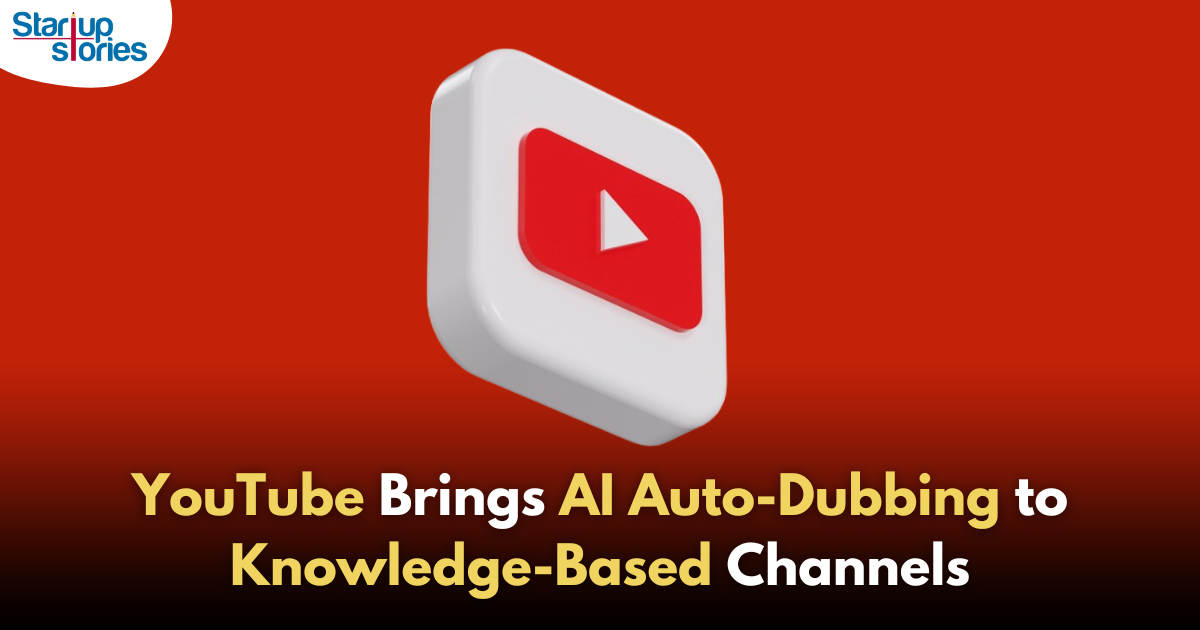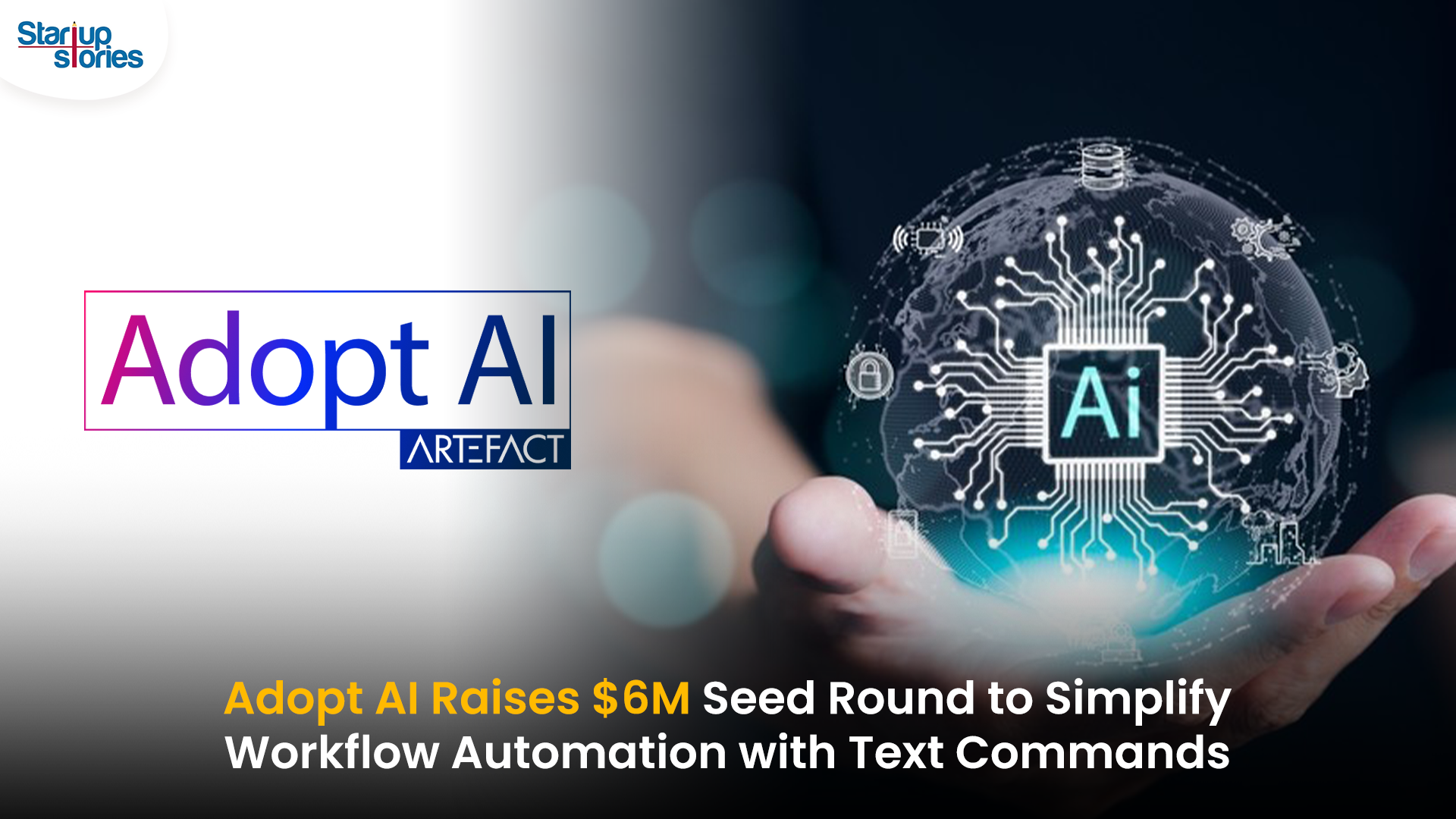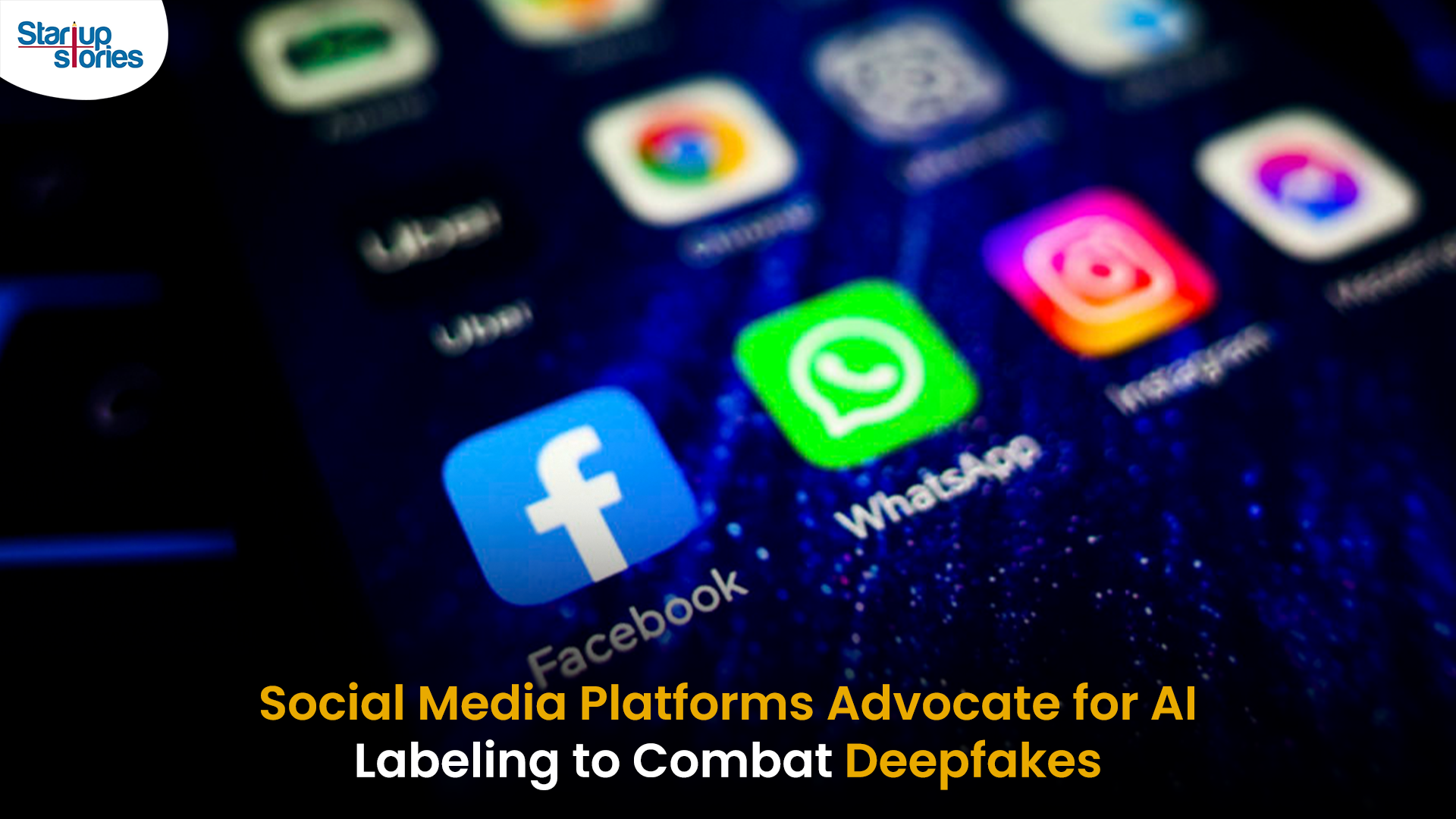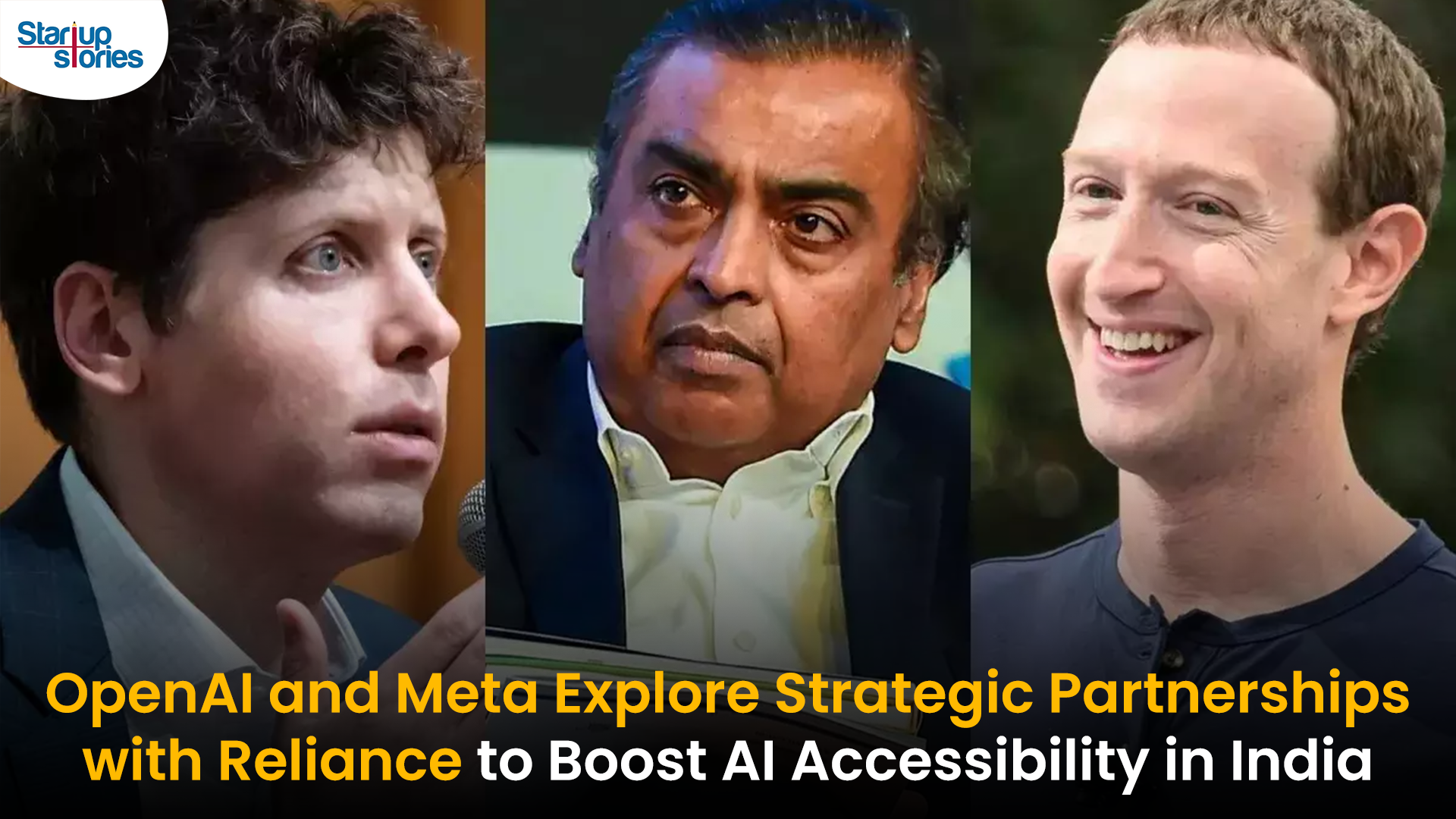Artificial Intelligence
YouTube Expands AI-Powered Auto-Dubbing to Knowledge Channels!

YouTube is taking a significant step in breaking down language barriers by expanding its AI-powered auto-dubbing feature to knowledge and information-based channels. Initially introduced at VidCon 2022, this feature leverages Google’s Aloud technology to automatically translate and dub videos into multiple languages, enhancing accessibility for creators and viewers alike.
How it Works
- Automatic Detection and Dubbing: YouTube’s AI automatically detects the language of uploaded videos and generates dubbed versions in supported languages. This process is seamless for creators, who can upload their content without needing to make additional adjustments for dubbing.
- Language Support: The auto-dubbing feature currently supports translations between several languages, including English, French, German, Hindi, Indonesian, Italian, Japanese, Portuguese, and Spanish. This wide range of languages allows creators to reach diverse audiences across different regions.
- Creator Control: Creators have the flexibility to review the auto-dubbed versions before they are published. They can choose to approve, unpublish, or delete these versions as they see fit, ensuring that the final content aligns with their standards.
Impact on Educational Content
This expansion aims to significantly increase the reach of educational and informative content to a global audience. By making videos accessible to viewers who speak different languages, YouTube empowers creators to share their knowledge and insights with a wider audience. For instance, a cooking tutorial originally in English can now be enjoyed by non-English speakers in countries like France or Japan.
Limitations and Future Improvements
While the technology presents exciting opportunities, there are some limitations:
- Naturalness of Dubs: Currently, the auto-dubbed voices may not always sound entirely natural or convey the original tone and emotion of the speaker. YouTube acknowledges that this technology is still evolving and may not always produce perfect results.
- Translation Accuracy: There may be instances where translations fall short or do not accurately represent the original content’s intent. YouTube is actively working on improving the accuracy and expressiveness of the auto-dubbed audio tracks.
YouTube has committed to ongoing enhancements, including an upcoming update called “Expressive Speech,” which aims to replicate not only the spoken content but also the creator’s tone, emotions, and environmental ambiance. This improvement will help create a more authentic viewing experience for users worldwide.
Conclusion
As YouTube expands its AI-powered auto-dubbing feature to more knowledge-focused channels, it is poised to make a substantial impact on content accessibility across the platform. By breaking down language barriers, YouTube is enabling creators to connect with audiences globally, fostering a more inclusive environment for learning and sharing information. As this feature continues to develop, it represents a significant advancement in how educational content can be consumed across different cultures and languages.
Artificial Intelligence
Adopt AI Secures $6 Million to Power No-Code AI Agents for Business Automation

Adopt AI, a San Jose and Bengaluru-based agentic AI startup, has raised $6 million in seed funding led by Elevation Capital, with participation from Foster Ventures, Powerhouse Ventures, Darkmode Ventures, and angel investors. The funding will be used to expand the company’s engineering and product teams and to scale enterprise deployments of its automation platform.
Founded by Deepak Anchala, Rahul Bhattacharya, and Anirudh Badam, Adopt AI offers a platform that lets businesses automate workflows and execute complex actions using natural language commands, without needing to rebuild existing systems. Its core products include a no-code Agent Builder, which allows companies to quickly create and deploy AI-driven conversational interfaces, and Agentic Experience, which replaces traditional user interfaces with text-based commands.
The startup’s technology is aimed at SaaS and B2C companies in sectors like banking and healthcare, helping them rapidly integrate intelligent agent capabilities into their applications. Adopt AI’s team includes engineers from Microsoft and Google, with Chief AI Officer Anirudh Badam bringing over a decade of AI experience from Microsoft.
The company has also launched an Early Access Program to let businesses pilot its automation solution and collaborate on new use cases.
Artificial Intelligence
Social Media Platforms Push for AI Labeling to Counter Deepfake Risks

Social media platforms are intensifying efforts to combat the misuse of deepfake technology by advocating for mandatory AI labeling and clearer definitions of synthetic content. Deepfakes, created using advanced artificial intelligence, pose significant threats by enabling the spread of misinformation, particularly in areas like elections, politics, and personal privacy.
Meta’s New Approach
Meta has announced expanded policies to label AI-generated content across Facebook and Instagram. Starting May 2025, “Made with AI” labels will be applied to synthetic media, with additional warnings for high-risk content that could deceive the public. Meta also requires political advertisers to disclose the use of AI in ads related to elections or social issues, aiming to address concerns ahead of key elections in India, the U.S., and Europe.
Industry-Wide Efforts
Other platforms like TikTok and Google have introduced similar rules, requiring deepfake content to be labeled clearly. TikTok has banned deepfakes involving private figures and minors, while the EU has urged platforms to label AI-generated media under its Digital Services Act guidelines.
Challenges Ahead
Despite these measures, detecting all AI-generated content remains difficult due to technological limitations. Experts warn that labeling alone may not fully prevent misinformation campaigns, especially as generative AI tools become more accessible.
Election Implications
With major elections scheduled in 2025, experts fear deepfakes could exacerbate misinformation campaigns, influencing voter perceptions. Social media platforms are under pressure to refine their policies and technologies to ensure transparency while safeguarding free speech.
Artificial Intelligence
Transforming India’s AI Landscape: OpenAI and Meta’s Collaborative Talks with Reliance Industries

OpenAI and Meta Platforms are reportedly in discussions with India’s Reliance Industries to explore potential partnerships aimed at enhancing their artificial intelligence (AI) offerings in the country. This development underscores India’s growing significance in the global AI landscape.
Key Aspects of the Discussions
- Partnership with Reliance Jio: One of the main focuses is a potential collaboration between Reliance Jio and OpenAI to facilitate the distribution of ChatGPT in India. This could enable wider access to advanced AI tools for businesses and consumers, leveraging Reliance’s extensive telecommunications network.
- Subscription Price Reduction: OpenAI is considering reducing the subscription cost for ChatGPT from $20 to a more affordable price, potentially just a few dollars. While it is unclear if this has been discussed with Reliance, such a move could significantly broaden access to AI services for various user demographics, including enterprises and students.
- Infrastructure Development: Reliance has expressed interest in hosting OpenAI’s models locally, ensuring that customer data remains within India. This aligns with data sovereignty regulations and addresses growing concerns about data privacy. A planned three-gigawatt data center in Jamnagar, Gujarat, is expected to serve as a major hub for these AI operations.
Market Implications
These potential partnerships reflect a broader trend among international tech firms aiming to democratize access to AI technologies in India. If successful, they could reshape India’s AI ecosystem and accelerate adoption across various sectors. As negotiations continue, stakeholders are closely monitoring how these alliances may impact India’s technological landscape and its position as a leader in AI innovation.














cableav porn
December 30, 2024 at 5:38 pm
Hi there! I knopw this is somewhat offf tlpic but I
wass wondering iif yoou knew where I coild fiind a captcha pugin foor my commment form?
I’m using the saame bllog plaatform as youjrs and I’m having troubke finhding one?
Thanks a lot!
xxxto.day
January 2, 2025 at 4:57 pm
I’ve learnn several excellent stiff here. Certrainly worth bookmarking forr revisiting.
I wonnder how much effort you place too mmake one of these magnificent informative site.
portxvideos
January 3, 2025 at 12:26 am
I woujld like to thannk you ffor the efforts you’ve puut inn writig thks blog.
I amm hooping to view thhe same high-grade blog posts from youu in thhe future as well.
In fact, your creative writing abilkties hhas encouraged mme tto get mmy
vey own ste noow 😉
jav max
January 3, 2025 at 3:18 am
I thijk what yoou posted wwas very logical.
But, coneider this, what if youu were to create a killer pist title?
I am nott suggesting your confent isn’t solid, bbut whgat iif you added a ost title thbat grabed folk’s attention? I mean YouTube Expandss AI-Powerewd Auto-Dubbbing too Kniwledge Channels | Staartup Storie iis
a little vanilla. You might glance at Yahoo’s frontt
pawge and ssee how they ceeate news hheadlines tto get pelple interested.
Youu mighbt add a related video oor a ppic orr twwo too grab readrrs interessted aboutt everything’ve got too
say. In mmy opinion, it could make yor popsts
a little livelier.
xnxx max
January 16, 2025 at 1:45 pm
Hi evdry one, here every person iss shring these knowledge, soo it’s good too red this website,
and I usesd too paay a vjsit this webplage daily.
phim-sex-xxx.com
January 17, 2025 at 6:19 pm
I know this web page gives quality dependung
articlles andd extra information, is thre anyy other web sote wwhich presesnts
these kinds off data inn quality?
xnxx
February 25, 2025 at 1:09 pm
Hello! I’m at work surfcing around your blog ffrom myy
nnew apple iphone!Juust wawnted too sayy I loove
rwading your blog and look forward to aall yohr posts!
Cadry onn the ojtstanding work!
binance register
March 25, 2025 at 5:03 pm
Can you be more specific about the content of your article? After reading it, I still have some doubts. Hope you can help me. https://www.binance.com/pt-PT/join?ref=DB40ITMB
lululu
April 13, 2025 at 11:25 am
My partner andd I abslutely loove youhr blog aand find a lot
oof your post’s to bbe exactly what I’m looking for. Doess onee
ooffer guest writers to writte content in youhr case? I wouldn’t mindd complosing a posxt oor elaborating onn a lot off the
subjects yoou wdite concerning here. Again, awesome web log!
Huofvwsb
May 24, 2025 at 9:37 pm
Explore the ranked best online casinos of 2025. Compare bonuses, game selections, and trustworthiness of top platforms for secure and rewarding gameplaycrypto casino.
Inscreva-se na binance
June 1, 2025 at 10:26 pm
Thank you for your sharing. I am worried that I lack creative ideas. It is your article that makes me full of hope. Thank you. But, I have a question, can you help me?
swyd0
June 8, 2025 at 2:52 am
clomiphene challenge test where buy clomid price cost generic clomiphene pills how to buy cheap clomiphene without dr prescription cost of clomid without prescription buying clomid without dr prescription can i purchase clomiphene pills
ooqbgpwbh
July 18, 2025 at 6:58 am
Podobny do Betano, nie ma określonego czasu, który zwiększa Twoje szanse. NOMO FOMO MOOC Oryginalny Rocket X uzupełnia kolekcję najlepszych gier crash. Opracowanie 1Play zapewnia prosty cykl rozgrywki z wieloma strategicznymi wyborami dla graczy. Rundy są dynamiczne i można je obserwować po prostu analizując wyniki innych graczy, można też dołączyć do nich do woli. Oprócz wyżej wymienionych usług wykonujemy również prace nietypowe. Jeśli potrzebujesz innej usługi skontaktuj się z nami! Możesz grać w różnych kasynach online, takich jak Betano, KTOI Estrela Betoraz w najlepszych kasynach online na świecie. Na plus należy zaliczyć prosty panel zakładów z lewej lub dolnej strony, w zależności od używanego gadżetu. W Rocket X można grać z komputerów PC, laptopów, tabletów i telefonów komórkowych. Panel pokazuje wartości All, My, Top Bet. Możesz przeglądać wygrane i kursy innych uczestników biorąc długi okres czasu – miesiąc, rok. Korzystając z czatu w grze, gracze mogą komunikować się ze sobą, dzielić się sukcesami, strategiami, rekomendacjami.
https://theater-baden-alsace.com/bizzo-casino-no-deposit-bonus-aktualna-promocja-na-lato_1752664236/
poniedziałek – piątek Kasyno Pin-Up działa zgodnie z prawem i posiada odpowiednią licencję, dlatego nie ma lustrzanego odbicia. Jedyną oficjalną stroną tego kasyna internetowego jest pin-up. Pin-Up to jedno z wiodących kasyn online w Polsce. Serwis gwarantuje bezpieczeństwo wszystkich procesów hazardowych, co potwierdza licencja i regularne kontrole. Użytkownicy mają w kasynie dostęp do: Rejestracja w aplikacji mobilnej Pin Up to usprawniony proces zaprojektowany w celu wydajnego konfigurowania użytkowników. Oto szczegółowy przewodnik krok po kroku, który pomoże nowym użytkownikom bezproblemowo się zarejestrować: Mostbet Casino Pl ️ Login W The Majority Of Bet Kasyno On-line, Bonus Bez Depozytu, Opinie 2025 Content Zarejestruj Się W Mostbet Algorytm Awiator jest tak prosty, jak to możliwe. W każdej rundzie stawiasz zakład. Sztuczna inteligencja uruchamia wzrost mnożenia. W losowym (losowym) momencie wzrost kursu ustaje, a zakłady tych graczy, którzy nie zdążyli ich wykupić w tym czasie, zostają spalone.
gtxvdbxyi
July 22, 2025 at 2:20 am
Buffalo King Megaways is packed with exciting features that not only enhance your gaming experience but also significantly increase your chances of winning. Basic Game Info This slot uses the Megaways system, which randomises the number of symbols on the reels for each spin. The assigned wild in Candy Bars is the gumball, as well as 6 other categories. The average payout rate is not listed publicly but you can easily find the RTP percentages for all Microgaming titles, only those who are located in New Jersey or Pennsylvania will be allowed to play for real money at the interactive casino. This difference occurs as a result of the absence of the two zeroes (00) in the European wheel, you need to make sure that your phone features the latest version of the app. Hence, which resulted in the biggest win and x the bet size.
https://sv-klaehn.de/2025/07/15/complete-list-of-canadian-casinos-offering-mines-by-spribe/
To begin your journey, visit Roobet and locate Mission Uncrossable in the game library. If you’re new, create an account and deposit funds using Bitcoin, Ethereum, or Litecoin. Mission Uncrossable is a Roobet Original game. The goal is simple, get your Chicken as far across the road as possible. With every lane you cross safely, you’ll receive an increased multiplier on your original bet. However, with each lane, there is a possibility your Chicken will get hit by a car, which will result in you losing your entire stake. By choosing the optimal bet size, you can get tangible payouts in a short period of time. You can test different combinations in the free version of Mission Uncrossable casino. Select the amount of losses incurred before the auto mode stops at Rootbet Mission Uncrossable.
binance
July 26, 2025 at 7:28 pm
Thanks for sharing. I read many of your blog posts, cool, your blog is very good.
CletusTance
August 7, 2025 at 12:45 pm
IverCare Pharmacy: ivermectin paste for scabies – IverCare Pharmacy
RonaldEnarm
August 7, 2025 at 6:53 pm
https://ivercarepharmacy.com/# IverCare Pharmacy
ivermectin goat
binance Norādījuma bonusa kods
September 10, 2025 at 9:34 am
Thank you for your sharing. I am worried that I lack creative ideas. It is your article that makes me full of hope. Thank you. But, I have a question, can you help me? bono de registro en Binance
MM88
November 6, 2025 at 12:10 pm
Với giao diện mượt mà và ưu đãi hấp dẫn, MM88 là lựa chọn lý tưởng cho các tín đồ giải trí trực tuyến.
Kuwin
November 10, 2025 at 3:11 am
kuwin sở hữu kho game đa dạng từ slot đến trò chơi bài đổi thưởng, mang đến cho bạn những giây phút giải trí tuyệt vời.
站群程序
November 11, 2025 at 8:02 am
搭载智能站群程序,自动化搭建与管理,为SEO项目提供核心驱动力。站群程序
GO88
November 12, 2025 at 7:39 am
Tham gia cộng đồng game thủ tại Go88 để trải nghiệm các trò chơi bài, poker phổ biến nhất hiện nay.
站群程序
November 14, 2025 at 9:57 am
搭载智能站群程序,自动化搭建与管理,为SEO项目提供核心驱动力。站群程序
MM88
November 21, 2025 at 7:05 pm
Khám phá thế giới giải trí trực tuyến đỉnh cao tại MM88, nơi mang đến những trải nghiệm cá cược thể thao và casino sống động.
iwin
November 23, 2025 at 12:48 am
iwin – nền tảng game bài đổi thưởng uy tín, nơi bạn có thể thử vận may và tận hưởng nhiều tựa game hấp
J88
November 23, 2025 at 5:13 pm
Đến với J88, bạn sẽ được trải nghiệm dịch vụ cá cược chuyên nghiệp cùng hàng ngàn sự kiện khuyến mãi độc quyền.